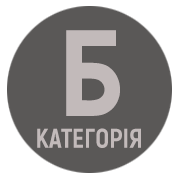Creating and using interactive activities for teaching foreign medical students
DOI:
https://doi.org/10.32782/2617-3921.2022.21-22.352-364Keywords:
interactive activities, interaction, English for Medical Purposes, foreign medical studentsAbstract
The purpose of creating and using interactive materials in teaching foreign medical students is to draw attention to the unique contribution that interaction with other students in a Medical English classroom makes to language learning and to give some advice on how teachers can help students get the most out of these activities and interaction in general. Medical students deal with medical jargon that is a language full of words of Greek-Latin origin, lexis that describes processes and parts of the human body, medical procedures, diseases, disorders and conditions. A teacher’s task is to present the target language, give students a chance to practise the new terms, and what is more, promote using the acquired language in a real-life medical context. This paper presents three interactive activities (taboo game, board game, role-play) that are adapted to the medical context, thoroughly planned and practised in class. The main aims of the activities, type of interaction, timing, scaffolding, instructions, instruction-checking questions, types of feedback, error correction, a suitable number of students in a group and anticipated problems are defined. The experiment proceeds in 6 stages: 1) adapting an interactive activity to the medical context; 2) creating a worksheet for students; 3) making a plan of setting up the activity for teachers; 4) using the planned activity in the classroom; 5) observing students in the process of performing/speaking/playing; 6) pointing out advantages and disadvantages of each interactive activity. Final results were obtained after the activities were used in the classroom, furthermore, observation and reflection helped to highlight the advantages and disadvantages of each activity in a medical context. As a result, it was found that effective classroom management techniques will reduce the number of disadvantages.
References
Вайнагій Т.М. Вплив культурних контекстів на формування англомовної професійно орієнтованої компетентності в говорінні майбутніх лікарів у полінаціональних групах. Освіта для XXI століття: виклики, проблеми, перспективи: метеріали 2 міжнародної науково-практичної конференції.
(Суми, 12-13 листопада 2020 р.) ; СумДПУ імені А.С. Макаренка, 2020. С. 210–212.
Вайнагій Т.М. Деякі аспекти формування англомовної професійно орієнтованої компетентності в діалогічному мовленні студентів спеціальності «Медицина» : Materials of the 76th final scientific conference for the teaching staff of Uzhhorod National University Medical faculty № 2: збірник тез. (Ужгород, 21-25 лютого 2021 р.). Ужгород : ДВНЗ «Ужгородський національний університет», 2021. С. 21–24.
Вайнагій Т.М. Особливості впровадження міждисциплінарного підходу у методику навчання англійської мови за професійним спрямуванням майбутніх лікарів. Педагогіка та психологія сьогодні: постулати минулого і сучасні теорії: збірник наукових робіт. (Одеса, 16-17 жовтня 2020 р.). Одеса : ГО «Південна фундація педагогіки», 2020. C. 122–125.
Вайнагій Т.М. Специфіка впровадження міждисциплінарного підходу в методику навчання англійської мови за професійним спрямуванням студентів спеціальності «Медицина» : Materials of the 75th final scientific conference for the teaching staff of Uzhhorod National University Medical
faculty №2: збірник тез. (Ужгород, 22-26 лютого 2021 р.). Ужгород : ДВНЗ «Ужгородський національний університет», 2021. С. 19–21.
Штолцел Ю.Ю., Даньків А.К. Англійська мова за професійним спрямуванням : навчально-методичні матеріали для студентів 2 курсу. Ужгород : ДВНЗ «УжНУ», 2018. 70 с.
Denysenko I., Tarasiuk A. Peculiarities of cooperative foreign language teaching in university education. Foreign Languages. 2020. № 3. P. 18–23.
Dmitrenko N. Theoretical and methodological aspect of profession-based English communication. Foreign Languages. 2020. № 1. P. 3–9.
Enhancing student interaction in the language classroom. Cambridge University Press. URL: https://www.cambridge.org/us/files/4815/7488/4742/CambridgePapersInELT_EnhancingInteraction_2018_ONLINE.pdf (дата звернення: 19.08.2022).
Fylypska V. Providing effective corrective feedback between a teacher and a student in process of foreign language learning. Foreign Language. 2020. № 4. P. 11–16.
Gledinning E. H. Professional English in Use. Medicine / Eric. H. Glendinning, Ron Howard. Cambridge : Cambridge University Press, 2010. 175 p.
Harmer J. How to teach English. Pearson Education Limited, 2007. 286 p.
Having a way with words. British Council. URL: https://www.britishcouncil.my/english/courses-children/resources/way-with-words (дата звернення: 19.08.2022).
Matiichuk K. Особливості викладання професійної англійської мови студентам медичних факультетів у різнорівневих групах. Сучасні дослідження з іноземної філології. 2021. Том 20 № 2. URL: http://philol-zbirnyk.uzhnu.uz.ua/index.php/philol/article/view/223/410 (дата звернення: 19.08.2022).
Role-play. British Council. URL: https://www.teachingenglish.org.uk/article/role-play (дата звернення: 19.08.2022).
Scrivener J. Learning Teaching 3rd Edition Student’s Book Pack (Books for Teachers): Macmillan Education, 1st edition, 2011. P. 284–291.
Spratt M. Pulverness A., Williams M. The TKT Course Modules 1, 2 and 3 2nd Edition : Cambridge English, 2nd edition, 2011. P. 13–17.
Thornbury S. How to teach vocabulary. Pearson Education ESL, 2002. 192 p.
Ustymenko O. Formative assessment of school students’ performance during their foreign language project-based learning. Foreign Languages. 2017. № 4. P. 3–22.
Vainagii T. English for Medical Purposes: structure and main systems of the human body (Learning materials and active vocabulary). Uzhhorod : “Lira”, 2020. 154 p.



